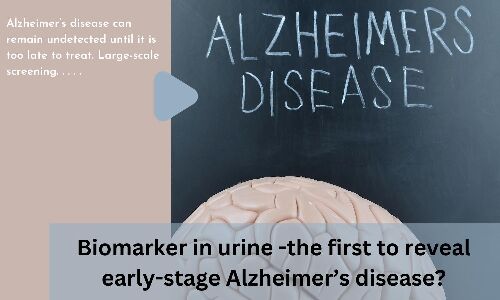
Alzheimer’s disease can remain undetected
until it is too late to treat. Large-scale screening programs could help to
detect early-stage disease, but current diagnostic methods are too cumbersome
and expensive. Could a simple urine test reveal if someone has early-stage
Alzheimer’s disease and could this pave the way for large-scale screening
programs?
A new study published to Frontiers is the
first to identify formic acid as a sensitive urinary biomarker that can reveal
early-stage Alzheimer’s disease, potentially paving the way for inexpensive and
convenient disease screening.
The
researchers tested a large group of patients with Alzheimer’s disease of
different levels of severity and healthy controls with normal cognition to
identify differences in urinary biomarkers.
They found that urinary formic acid is a
sensitive marker of subjective cognitive decline that may indicate the very
early stages of Alzheimer’s disease. Current methods to diagnose Alzheimer’s
are expensive, inconvenient, and unsuitable for routine screening. This means
that most patients only receive a diagnosis when it is too late for effective
treatment. However, a non-invasive, inexpensive, and convenient urine test for
formic acid could be just what the doctor ordered for early screening.
Alzheimer’s disease is a continuous and
concealed chronic disease, meaning that it can develop and last for many years
before obvious cognitive impairment emerges. The early stages of the disease
occur before the irreversible dementia stage, and this is the golden window for
intervention and treatment. Therefore, large-scale screening for early-stage
Alzheimer’s disease is necessary for the elderly.
Urinary formic acid showed an excellent
sensitivity for early Alzheimer’s screening. “The detection of urine biomarkers
of Alzheimer’s is convenient and cost-effective, and it should be performed
during routine physical examinations of the elderly.
Reference:
Biomarker in urine could be the
first to reveal early-stage Alzheimer’s disease; Frontiers in Aging
Neuroscience, DOI:10.3389/fnagi.2022.1046066.
